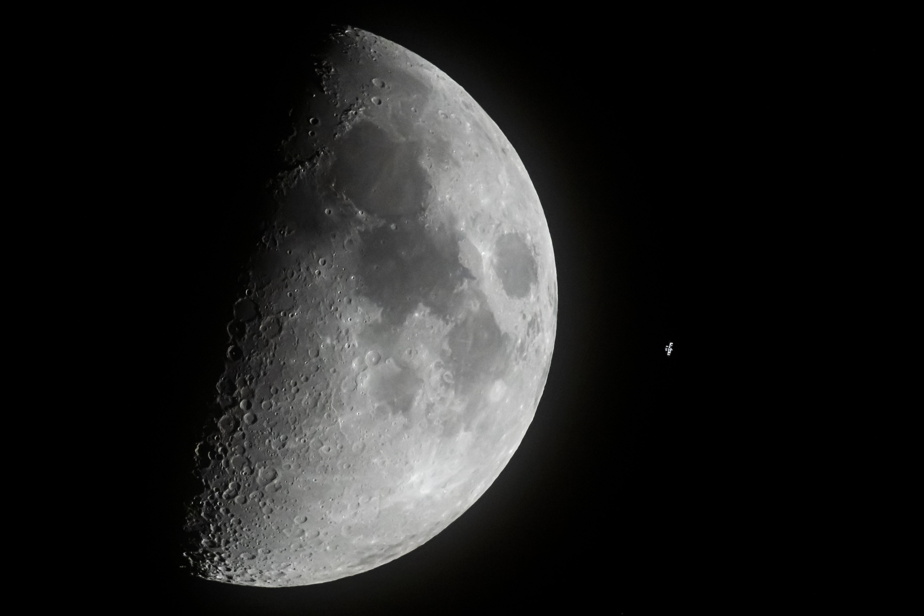Do we intend to leave our waste lying around for a long time on the Moon?
Mario Grenier
Faced with the explosion in the number of lunar missions planned, an international think tank on “sustainable use of the Moon” has just been created in Vienna.
“There are growing concerns about the impact of exploration activities on the lunar environment,” says Vishnu Reddy, a University of Arizona astronomer who works on a catalog of debris in lunar orbit. . ” The union international astronomical and the UN are collaborating on the project on the sustainable use of the Moon. The risk of contamination or accident is currently very low compared to what we see in Earth orbit. But we must not wait for it to increase, especially since the virtual absence of atmosphere on the Moon does not allow the debris that crashes on the Moon to be burned. »
The Expert Group for the Sustainable Use of the Moon (GEGSLA) was founded in 2020 by the Viennese NGO Moon Village, which brings together companies interested in the exploration and exploitation of the Moon. GEGSLA launched its activities last January and has been participating since March in meetings of the Committee on the Peaceful Uses of UN Space, also based in Vienna.

PHOTO FROM NASA WEBSITE
An astronaut from the Apollo 11 mission
NASA periodically publishes in consumer articles a catalog of objects left behind on the Moon, ranging from Apollo vehicles to bags of excrement left by American astronauts on our satellite more than half a century ago. The last mentions mention 200 distinct objects.
Mr. Reddy, for his part, monitors just over 200 objects in lunar orbit.

PHOTO FROM THE UNIVERSITY OF ARIZONA WEBSITE
Vishnu Reddy, University of Arizona astronomer who works on a catalog of debris in lunar orbit
But it is not certain that these are all debris from space exploration. We can only observe the largest objects, the size of a few meters. For smaller objects, we will need a new telescope, which we will have in two or three years.
Vishnu Reddy, University of Arizona astronomer who works on a catalog of debris in lunar orbit
No collision in lunar orbit has ever been detected, according to the Arizona researcher. But last year, a Chinese rocket crashed into the moon after following an erratic orbit. According to Mr. Reddy, this is not evidence of poor Chinese planning. “They were just unlucky. »
contaminated water
It is likely, moreover, that the fuel from lunar missions, particularly those that landed near the poles, has already contaminated the ice that is hidden there in craters. “Our modeling shows that 15% to 20% of the gases released by a polar lunar mission end up in the craters”, explains Pavarthy Prem, an astrophysicist from Johns Hopkins University who published his results in 2020 in the journal GJR Planets. “For the Apollo missions, it’s probably lower because they were close to the equator. Gases from lunar missions are quickly destroyed by UV rays, unless they can hide in the craters at the poles, where UV does not reach. »
This contamination means that it will be necessary to dig at least a few centimeters to know the true composition of the lunar ice.
Ideally, a lunar ice sampling mission should be launched quickly to avoid losing this crucial information for understanding the evolution of the Moon and the Earth.
Pavarthy Prem, astrophysicist at Johns Hopkins University
Lunar pollution does not only have bad sides. The sacks of Apollo astronauts’ excrement could harbor still-living microbes, which could shed light on the possibility that life was transmitted from one planet to another, or even from one solar system to another, according to Mark Lupisella, a NASA exobiologist who has addressed the issue at international conferences. “There is regular discussion about returning to Apollo sites to collect these bags of excrement, but there is no formal plan yet. »
Japanese experiments aboard the International Space Station have found that microbes can be resurrected after spending eight years in the vacuum of space.
Do you have a scientific question? Ask Mathieu Perreault.
Learn more
-
- 10 billion billion
- Number of molecules per cubic centimeter in the air at ground level on Earth
Source: NASA
- 1 million
- Number of molecules per cubic centimeter in the atmosphere of the lunar soil
Source: NASA
